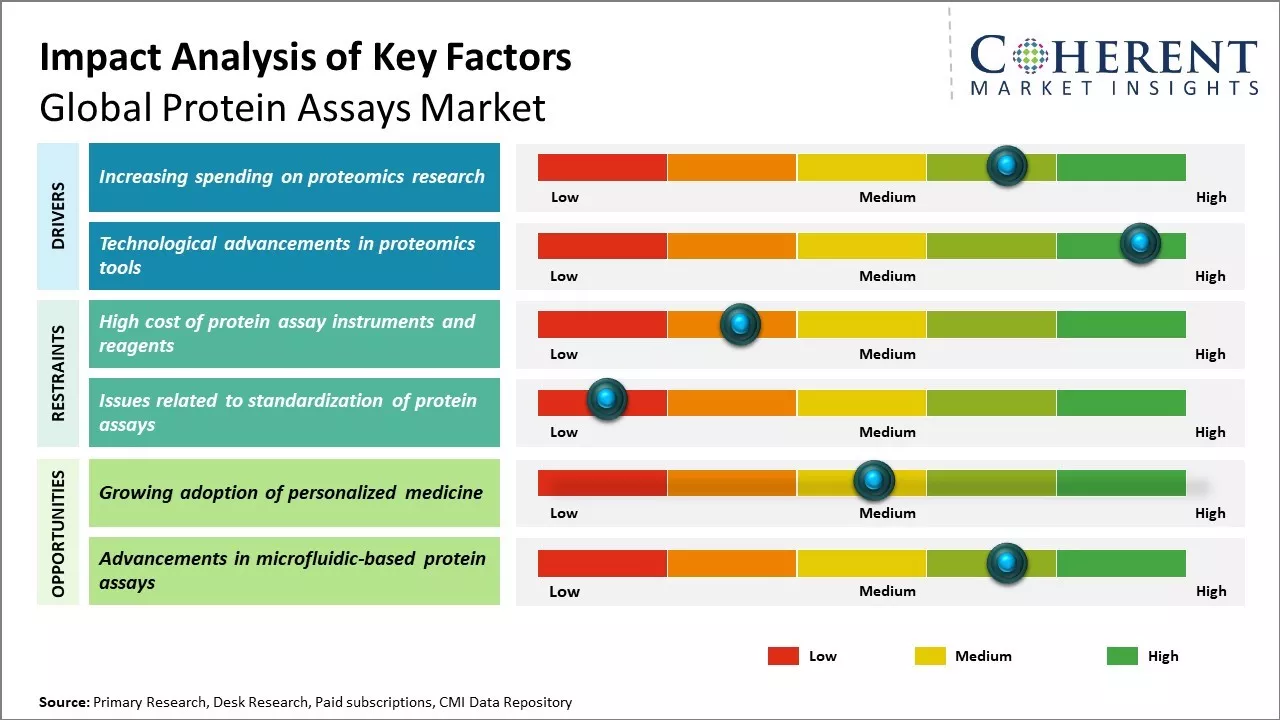Global protein assays market is estimated to be valued at USD 2.80 Bn in 2025 and is expected to reach USD 6.19 Bn by 2032, exhibiting a compound annual growth rate (CAGR) of 12.0% from 2025 to 2032.

To learn more about this report, Request sample copy
Growing biopharmaceutical and biotechnology industries can boost demand for protein-based drugs and diagnostics. R&D in disease diagnostics and drug discovery have further boosted the need for protein assay procedures.
Increasing spending on proteomics research
With greater focus on precision medicine, the field of proteomics has witnessed significant advancements. Governments and private institutions across major economies have ramped up their funding for proteomics initiatives and collaborative projects. This positive trend towards greater proteomics spending can boost demand for advanced protein assay tools and kits. Researchers rely on protein assays to analyze and quantify proteins, which helps in developing deeper understanding about various biological systems at the molecular level. More spending on proteomics translate to more assays being performed in academic as well as pharmaceutical laboratories. Establishing comprehensive protein maps of human tissue and biofluids can accelerate diagnosis and treatment of complex diseases. It also helps gain insights into disease pathology and progression. Large scale studies involving thousands of patient samples often require analysis of protein expression levels or post-translational modifications.
This elevates the requirement for high throughput, reproducible and automated protein quantification technologies. Majority of additional proteomics expenditure is directed towards multi-omic initiatives that integrate genomics, transcriptomics and proteomics data. The focus is on applying system biology approaches to better profile cancer at molecular level, understand mechanism of drug resistance and map protein-protein interactions. Disease centered biobanks in Europe and U.S. now host samples and clinical datasets numbering in hundreds of thousands. Analyzing these valuable resources requires assay tools and kits that can analyze thousands of specimens within set timelines and budget. This boosts demand from both governments funded as well as industry sponsored clinical studies and trials.
National level "Moonshot" programs in proteomics have spurred commercial efforts towards development of innovative protein assays. Companies are innovating assays compatible with single-cell analysis, capable of providing deeper insights into tissue heterogeneity at very high resolution. Others are improving compatibility of assays for mass-spectrometry based platforms to enable comprehensive and simultaneous analysis of proteoforms, isoforms and post-translational modifications from limited sample amounts. Success of such initiatives would depend on sustaining adequate funding support both for academic as well as private sector proteomics R&D over the long run.
Joining thousands of companies around the world committed to making the Excellent Business Solutions.
View All Our Clients